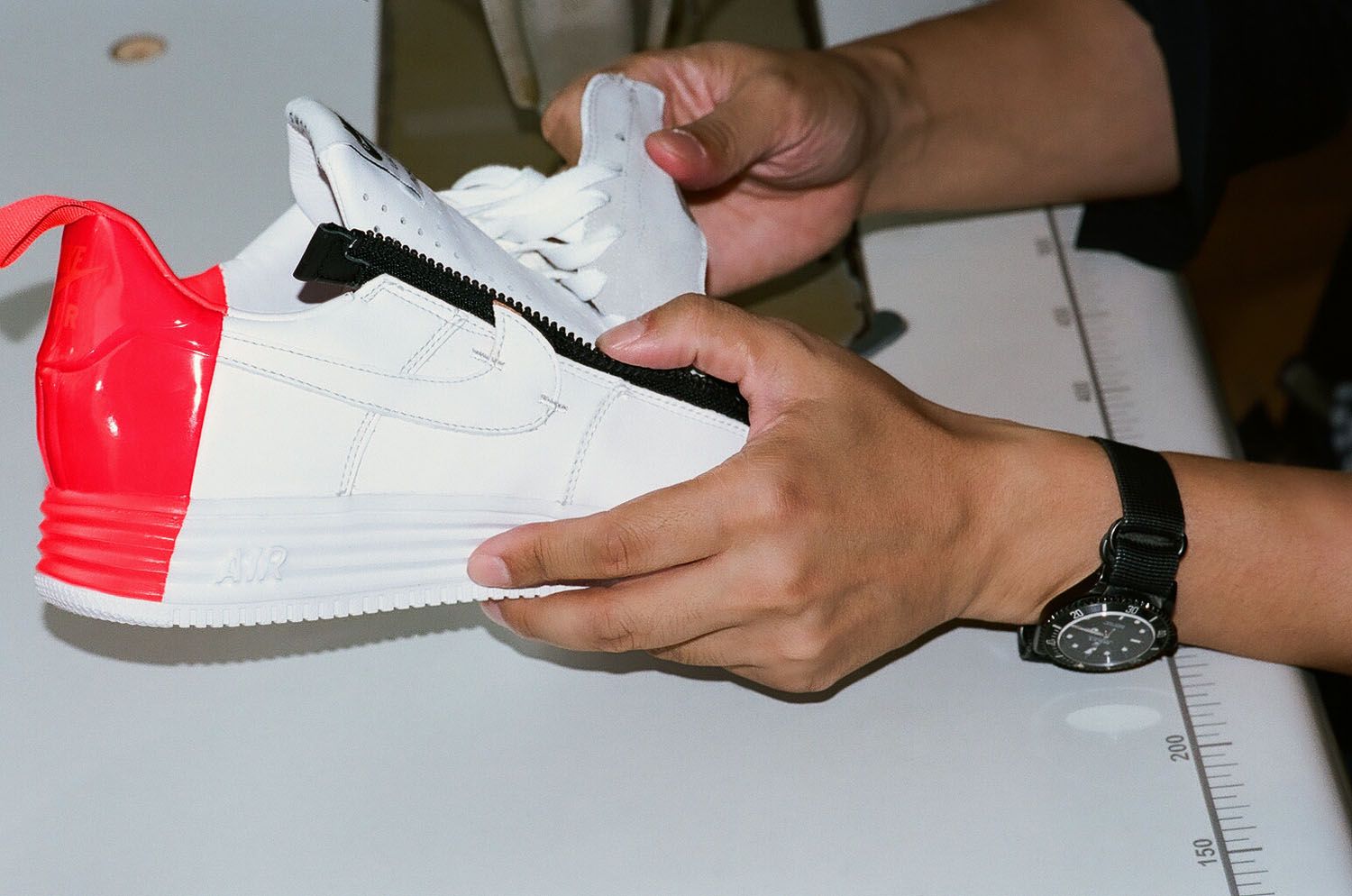“Ideas from MASSIMO OSTI”: 032c Book Club, Classics #1

Ariela Goggi (vice-director of Vogue Italia) recalls Stone Island garment engineer MASSIMO OSTI’s boat, “the mythical Guapa,” one summer back in the late 1980s. During a maritime storm, Daniela Facchinato – Osti’s wife – passed around prototype jackets made from an extremely lightweight, opaque, wrinkled nylon, to shield their guests from the rain. That’s when, amidst the elements, they witnessed something both “disquieting and beautiful”: according to Goggi, a “tableau of fluctuating colors” spread across the deck of the Guapa, oozing from the jackets in a kind of “fluo mix.” Whimsical stories like this formed a strong identity for Stone Island. As Carlo Grazia evokes, “Stone Island allowed one to dream! To dream of adventurous pastimes, of holidays on a yacht or on the ski slopes in a jacket that changed color.”
Osti defined a future aesthetic. His development of experimental materials and styles gave birth to a new era of cult fashion. The functional revolution of the 90s and the hooliganism culture in Britain is unfathomable without the iconic brands of Stone Island and Chester Perry (C.P.). The father of sportswear – or “urban armor” – set the requisite standards of a modern lifestyle brand.
Ideas from Massimo Osti – published by Damiani Bologna – explores a catalytic turning point in men’s fashion. The styles Osti saw in shop windows in the early 70s did not reflect the cultural changes already underway in society. “Ironic Forms for the Daily Life of a Transitory Population,” an essay by Franco “Bifo” Berardi – writer, media theorist, and activist – speaks of the political acceleration that was occurring in Bologna at that time.
As Berardi points out, “the production of Massimo Osti matured in this linguistic climate which produced objects to underline a function and at the same time negate it, dissolve it, and mock, in a certain sense, the function itself.” Osti was the architect during these years. Previously unimaginable forms, shapes, and materials emerged, expressing this sensation: plastic jackets, tone-on-tone. Osti put every design and material through rigorous and continual experimentation: under his instruction, his team tested and re-tested every last fiber used through rubber-coating, emery-brushing, resining, siliconing, oil finishing, bonding, and dying (the latter, with the help of in-house chemists). Berardi proclaims that this “was our communal strut towards a future, a future which already no longer existed.”
Osti collected over 35,000 historical pieces throughout his career, which he kept in a large warehouse and bestowed incredible value on them when envisioning new collections. His belief that “the important thing is to know how to pick the right moment to revisit a garment, adapting it to current needs” developed his unique understanding of functionality and anticipation in the market. As Osti once said, “I like to play with forms which don’t belong to the history of the 20-year-olds of today using materials which were unknown to the 20-year-olds of yesteryear.”
Debunking the strict bond with trends, Osti, as he once said, set out to “make items of clothing whose raison d’être were founded on a precise strategy of research into materials and forms.” With all of his celebrated material innovations, such as Tela Stella and Raso Gommato, from C.P. Company to MO Double Use, Osti never faltered in his nonstop work ethic – right up until his death in 2005 at age 59 . Still echoing today, Osti proclaimed, “The only impulse which justifies the efforts undertaken over the years, in a constant cycle, is passion. The energy is not explainable purely in terms of reason. I believe myself to be somebody who responds passionately in an apathetic world.”

From Ideas from Massimo Osti: Life Savers — "A motor scooter is the preferred method of transportation for teenagers in Italy and Massimo becomes preoccupied with the disequilibrium created by school books in the backpacks of young drivers so he invents a type of vest with a rear pocket which can be tightened around the chest lending more stability to the load. Towards the end of the 90s he begins to research shock proof materials and the safety equipment used by laborers and the military. From this research he begins a more profound experimentation with designs for reflective garments, made from Luminol, which are also buoyant, heated, equipped with built-in air bags, and shock-proof pads, as well as backpacks and object-carrying vests which leave the hands free while working or driving."
Ideas from Massimo Osti, published by Damiani (Bologna, 2013).
